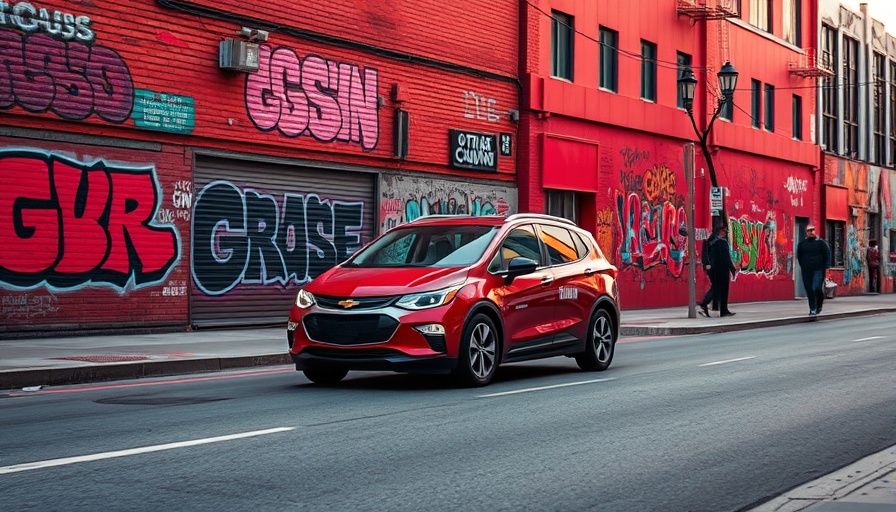
The Rejuvenation of GM's Cruise Vehicles: A New Chapter
In an unexpected turn of events, GM's Cruise cars have returned to a limited operational status across California, Michigan, and Texas—not for ride-hailing services, but as part of a revolutionary testing phase dedicated to developing advanced driver assistance systems. These changes indicate a significant pivot for GM, refocusing from commercial ride-hailing ambitions to enhancing safer driving technologies that can be integrated into everyday vehicles.
Contextualizing Cruise's Temporary Reprieve
GM's recent activities follow a tumultuous history for its autonomous vehicle division. Initially envisioned as a pioneering robotaxi service, Cruise’s operations faced setbacks that led to the suspension of its ride-hailing services after a catastrophic incident in October 2023. This marked the beginning of a downward spiral, culminating in significant layoffs and regulatory scrutiny.
Despite these setbacks, GM’s decision to repurpose a portion of its fleet suggests a strategic reimagining. By valuing the existing technology and redefining its utility, GM aims not just to recover its investment but to pivot to an area with perhaps greater immediate value—enhanced vehicle safety.
Shifting Gears: Internal Testing Focus
The testing of limited Cruise Bolt EVs, now stripped of the iconic logo and repurposed for internal use, signifies a new direction. The presence of lidars and other sensor technology equipped on these vehicles supports GM’s mission to further enhance its Super Cruise feature, assisting drivers with everything from lane changes to emergency braking.
According to GM spokesperson Chaiti Sen, these vehicles are undergoing operational testing with trained drivers, emphasizing a commitment to developing systems that can function autonomously in high-demand urban environments—albeit not quite yet ready for public interactions.
Lessons Learned: Insights from Past Failures
The winding road of Cruise’s development echoes lessons for the automotive market. As other companies like Waymo dive deeper into autonomous services, GM's cautious approach highlights the balance required between innovation and safety. It raises critical questions about how automotive brands will frame the narrative of public perception and technology trust moving forward.
As GM steps back from the exuberance of a robotaxi fleet, it serves as a reminder that the road ahead must prioritize proven technologies that enhance safety and reliability. The intricacies involved in developing a fully autonomous fleet dwarf those in building driver-assist systems—which may well be the more practical, albeit less glamorous, pathway toward automotive innovation.
The Future of Intelligent Driving: Predictions and Trends
The future might not be the grand rollout of self-driving cars as many anticipated. Instead, it could be dominated by drivers who are supported rather than replaced by technology. GM's approach to driving safety through advanced assistance systems could save lives and adapt to consumer preferences effectively, positioning them for success in the competitive landscape of intelligent driving solutions. With over 60% of Super Cruise owners actively engaging the technology, it showcases consumer readiness for innovations that genuinely enhance the driving experience.
In essence, trends may showcase an evolving landscape where driver-augmented technologies outpace completely autonomous vehicles as the automotive industry learns from past missteps.
Final Thoughts: What This Means for Marketing Managers
For marketing managers in the auto industry, GM's shifts provide valuable case studies. The rebranding and repositioning of Cruise vehicles underscore the importance of agile marketing strategies that respond to technological advancements and societal engagement levels with those technologies. Consumer safety and trust are pivotal points of connection for messaging surrounding an increasingly automated world.
As advancements evolve, it becomes crucial for marketers to articulate benefits clearly while managing expectations around automation. By aligning messaging with consumer sentiments and technological readiness, brands can build stronger connections and foster greater trust in their innovations, paving the way for a more integrated and intelligent future of transportation.
 Add Row
Add Row  Add
Add 




Write A Comment